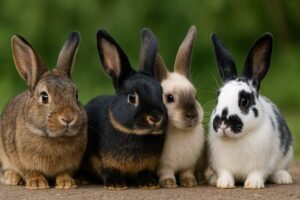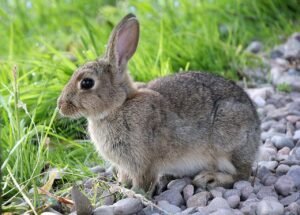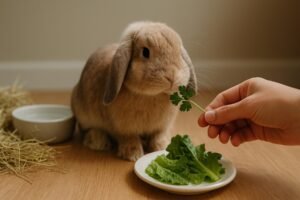Charlie Rabbit stands out with their mostly white fur and less than 10% color. Curious about what makes them unique and how to care for them? This article provides all the details you need.
Key Takeaways
- Charlie rabbits are unique due to their distinct color pattern, featuring less than 10% color on a predominantly white coat.
- Proper care for Charlie rabbits includes a suitable diet, spacious housing, and regular health monitoring to ensure their well-being.
- Responsible breeding practices are essential for Charlie rabbits to minimize genetic health issues and maintain their unique traits.
What is a Charlie Rabbit?
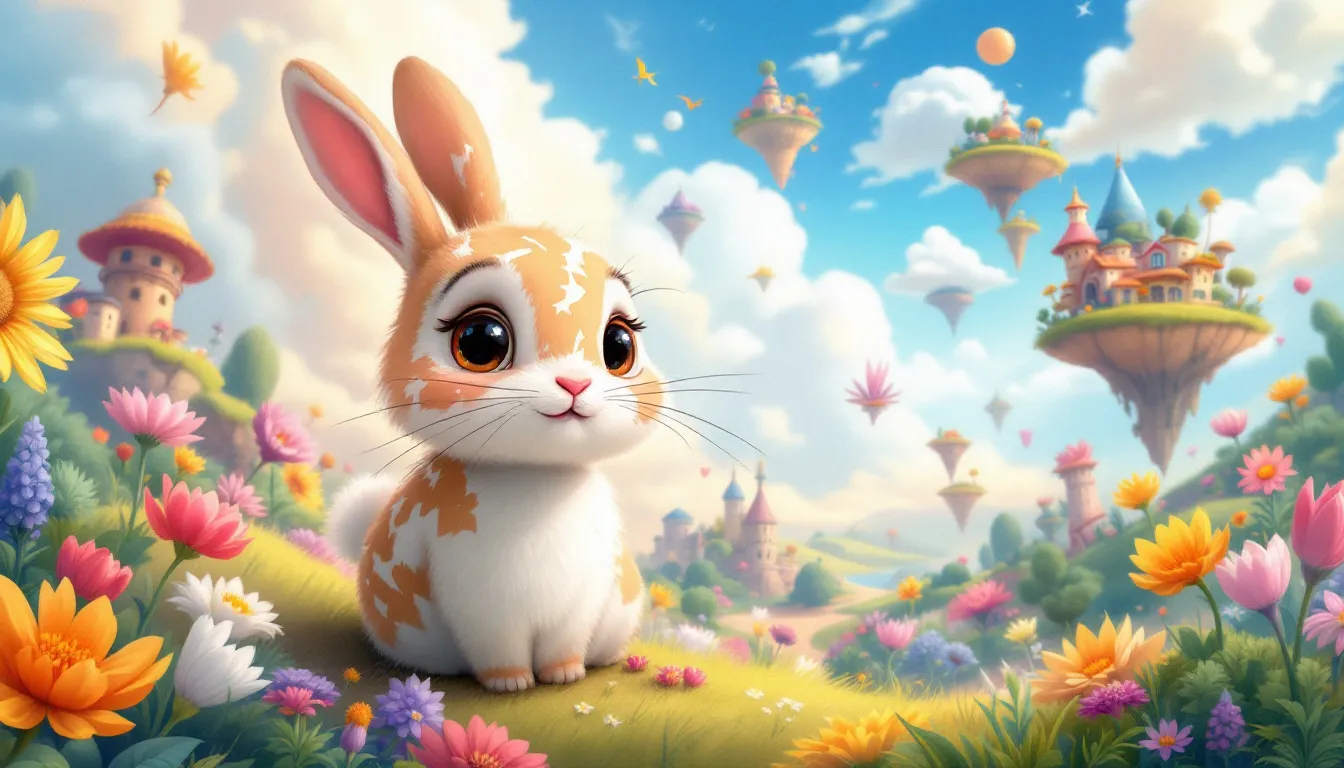
Charlie rabbits have a distinctive pattern that differentiates them from other broken-patterned rabbits. They feature significantly less color, typically under 10% on a predominantly white coat. This distinctive appearance is not just a random occurrence but rather a hallmark of their genetic makeup. The name ‘Charlie’ itself is inspired by the small color patch on their nose, reminiscent of Charlie Chaplin’s iconic mustache.
A Charlie rabbit is a specific type of rabbit characterized by this unique color pattern. It’s this minimalistic yet charming appearance that makes them so appealing to rabbit enthusiasts. Understanding what makes a Charlie rabbit unique is the first step in appreciating their special needs and care requirements.
Genetics of the Charlie Pattern
Understanding the genetics behind the Charlie pattern is fascinating and crucial for any potential owner or breeder. Genetically:
- A Charlie rabbit has a specific allele pairing of (EnEn).
- This differentiates it from broken-patterned rabbits, which have an (Enen) pairing.
- Two copies of the broken gene result in the Charlie pattern.
- A Charlie rabbit is genetically a homozygous broken with two copies of the English Spotting gene.
- The Charlie pattern is characterized by having less than 10% color.
A rabbit with one broken gene (En) and one solid gene (en) will have a coat that includes more than 10% color. This genetic distinction is crucial for breeders, as it determines the rabbit’s appearance. When two copies of the broken gene are present, it results in a Charlie rabbit, which typically has less than 10% of its fur colored. However, the presence of the ‘En’ gene is also linked to a condition called Megacolon, which can affect the rabbit’s digestive system.
Breeding Charlie rabbits requires a clear understanding of the genetic patterns that define their appearance. This knowledge is vital not only for producing the desired coat pattern but also for ensuring the health and well-being of the rabbits. Responsible breeding involves careful consideration of genetics to minimize health issues.
Identifying a Charlie Rabbit
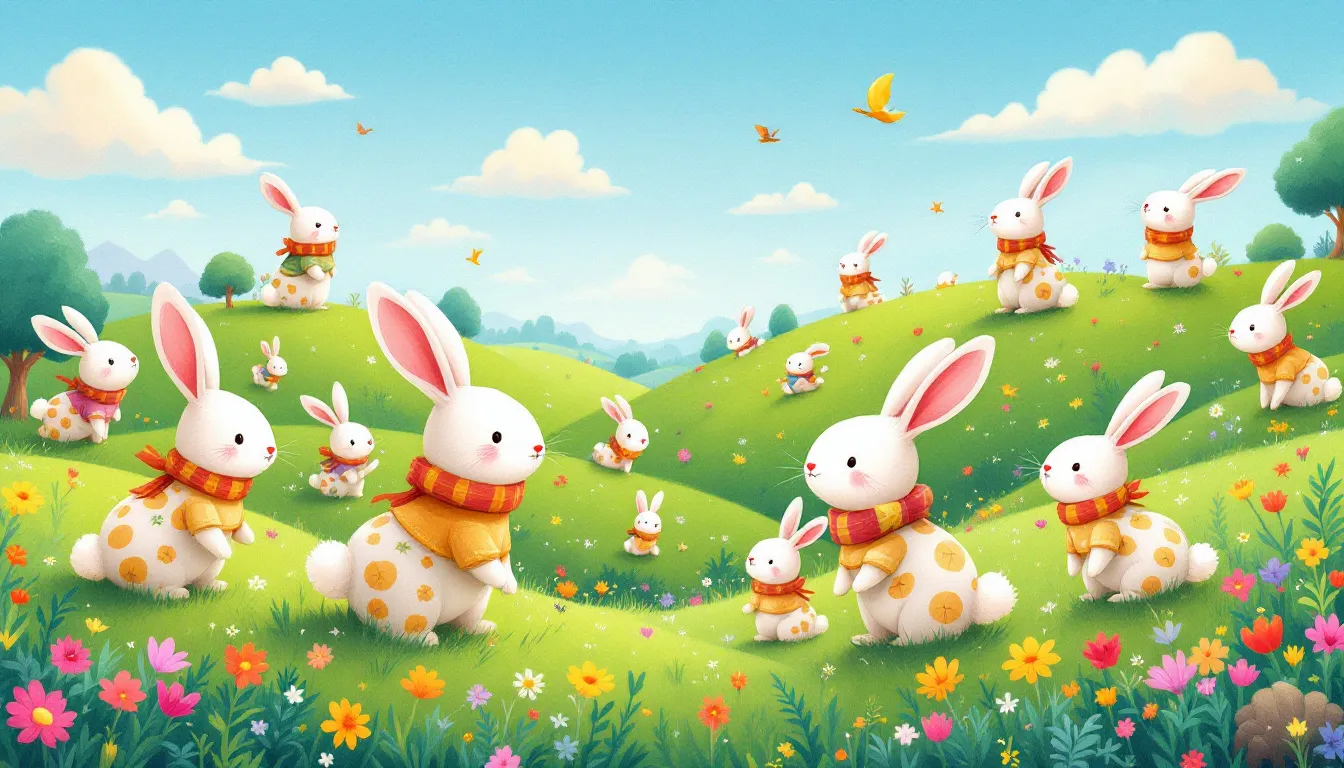
Identifying a true Charlie rabbit becomes straightforward once you know what to look for. These rabbits exhibit:
- Minimal color in their coat, generally 10% or less, leading to a predominantly white appearance with small markings.
- Small eye circles.
- Minimal color markings.
- Typically, a nose spot instead of the standard butterfly marking.
These subtle yet distinctive features make Charlie rabbits, called cute country lol chocolate fawn, easy to identify among other marked edited mar tri similar breeds. Remember, she’s a well-known member, easy to identify among them at this buck point bit. Charlie marked rabbits are often perceived as cute and likened to little panda bears, adding to their charm and appeal.
Common Breeds with Charlie Pattern
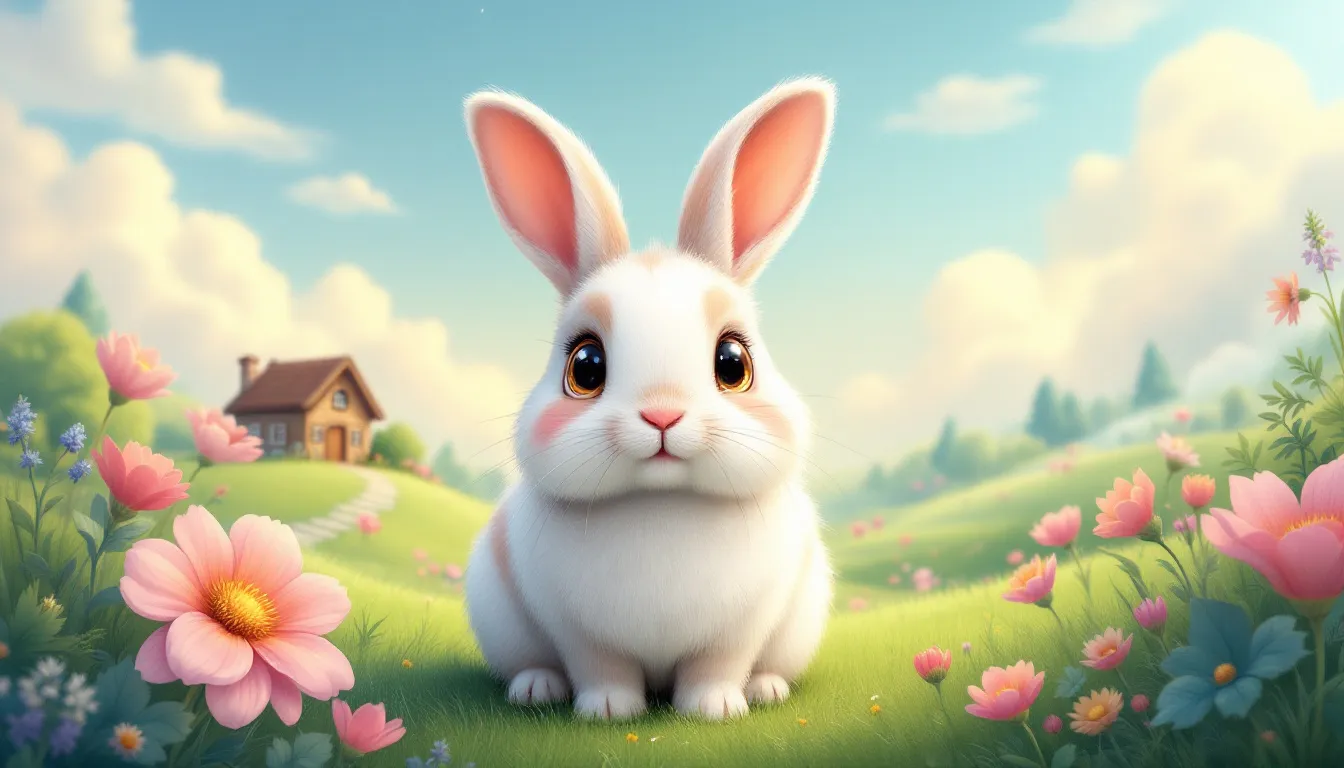
Several rabbit breeds commonly exhibit the Charlie pattern, each with its unique charm. The En gene alters the coat of a solid rabbit by removing some color, creating a patterned appearance. Notable breeds that display the Charlie pattern include Holland Lops and Dwarf Hotots, known for their specific distribution of color and markings.
Holland Lops
Holland Lops are well-known rabbits recognized for their unique appearance and friendly temperament. The Charlie pattern is commonly found in Holland Lops, showcasing their genetic variety. With their compact body, short ears, and vibrant color variations, these rabbits are a favorite among rabbit enthusiasts.
The genetic diversity of Holland Lops allows for a wide range of color patterns, including the charming Charlie pattern. Their distinct features and gentle nature make them an excellent choice for both pet owners and breeders aiming to add uniqueness to their rabbitry.
Dwarf Hotots
In Dwarf Hotots, the charlie pattern is particularly striking, typically manifesting as distinct eye bands against a predominantly white coat. This small breed of rabbits showcases a charming charlie pattern, which manifests as a white base with unique black markings, enhancing their appeal. The distinct markings draw attention to their eyes.
Well-defined white patches enhance the small stature and overall charm of Dwarf Hotots with the charlie pattern. These rabbits are known for their unique appearance and delightful personality, making them a popular choice among rabbit lovers.
Other Popular Breeds
Several breeds commonly exhibit Charlie patterns, with Holland Lops and Dwarf Hotots being among the most well-known. The Charlie pattern in Holland Lops is prevalent, characterized by a broken coat color and unique markings. Dwarf Hotots showcase charlie patterns that are particularly distinguished by their small size and unique broken color markings.
Both breeds exhibit charlie patterns, but they differ in size, shape, and other distinctive features.
Care Tips for Charlie Rabbits
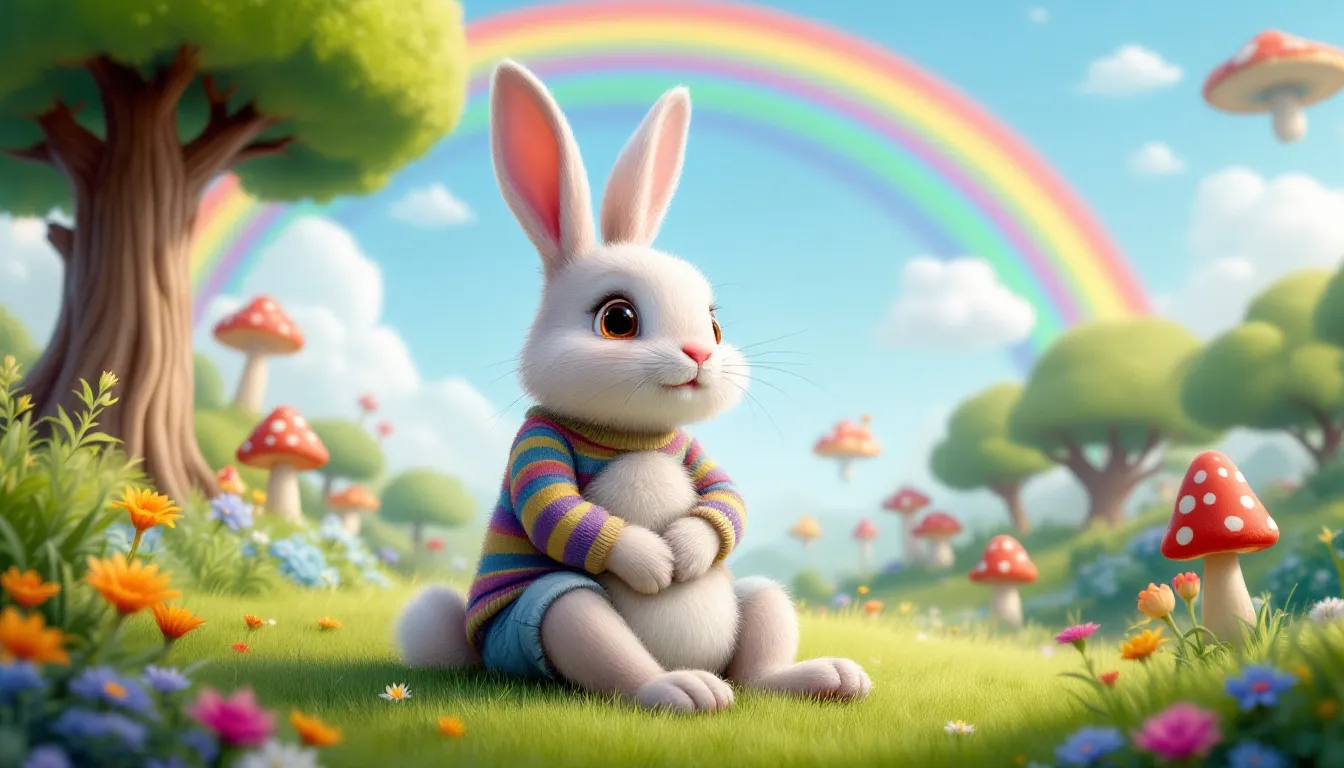
Caring for Charlie rabbits involves more than just providing food and shelter. They need a safe environment, regular veterinary care, and social interaction. It’s a common misconception that rabbits enjoy cuddling, but they are prey animals and often prefer not to be held tightly or snuggled. Recognizing their behavior is key to providing proper care.
Another myth is that rabbits can live outside in a hutch, but they are vulnerable to temperature extremes and predators when kept outdoors. Proper care ensures Charlie rabbits live happy and healthy lives, requiring attention to housing, diet, and health monitoring.
Let’s dive into the specific care tips for keeping your Charlie rabbit in the best condition.
Diet and Nutrition
Charlie rabbits benefit from a diet that includes fresh hay, leafy greens, and limited pellets to ensure they receive essential nutrients. High-quality hay, such as Timothy hay, should be a primary component of their diet to support digestion and dental health. A balanced diet ensures Charlie rabbits receive adequate nutrients for healthy growth.
A proper diet involving these components helps prevent health issues and supports normal growth rates in Charlie rabbits. This approach to feeding keeps your rabbit healthy and happy.
Housing Requirements
Charlie rabbits require a spacious enclosure that allows them to hop freely and engage in natural behaviors. Tunnels, dig boxes, and various toys can stimulate a Charlie rabbit’s curiosity and prevent boredom.
Adequate space and stimulation are key to their well-being.
Health Monitoring
Common health issues in Charlie rabbits can include inherited diseases that arise from poor breeding practices. Regular health checks are crucial for maintaining the overall wellness of Charlie rabbits. Health monitoring should be a routine part of ownership to ensure pets remain healthy and vibrant.
Responsible breeding involves:
- Maintaining genetic diversity
- Culling animals that exhibit health issues to prevent genetic problems
- Avoiding the breeding of Charlie rabbits with known genetic issues to help maintain healthy stock.
- Breeding two Broken patterned rabbits should generally be avoided to prevent health issues.
- Maintaining genetic diversity
- Culling animals that exhibit health issues to prevent genetic problems
- Avoiding the breeding of Charlie rabbits with known genetic issues to help maintain healthy stock.
Breeding Considerations
Considerations for breeding Charlie rabbits are crucial for their overall health and well-being. The choice of breeding stock should align with the breeder’s specific production goals, such as for pets, meat, or fur. Proper care ensures Charlie rabbits live happy and healthy lives, requiring attention to housing, diet, and health monitoring.
The Charlie pattern is notably present in various rabbit breeds, often influencing their appearance and health. Responsible breeding practices are crucial for ensuring the health and well-being of Charlie rabbits.
Selecting Breeding Pairs
Breeding pairs should be chosen based on genetic compatibility to ensure healthy Charlie rabbits. Unlike other rabbits with solid or broken patterns, Charlie rabbits cannot have a solid parent; if a solid offspring arises from a breeding, the rabbit in question cannot be a Charlie.
Breeds that commonly exhibit Charlie patterns include:
- Mini Rex, presenting unique variations in color and markings
- English Spots, presenting unique variations in color and markings
- Blanc de Hotot, showcasing unique variations in color and markings
- Various Mini Lops, showcasing unique variations in color and markings
Understanding Litter Patterns
Litter outcomes vary significantly based on the genetic makeup of the breeding pairs. Breeding a Charlie rabbit with a broken rabbit typically results in a mix of charlies, broken-patterned rabbits, and solid-colored rabbits. This genetic diversity is a result of the combination of the broken gene (En) and the solid gene (en).
Understanding these genetic patterns and their influence on the litter is crucial for breeders aiming to produce specific patterns and healthy rabbits. It helps ensure that the desired traits are passed on while maintaining the genetic health of the rabbits.
Ethical Breeding Practices
Ethical breeding practices are crucial for maintaining the health and well-being of Charlie rabbits. Ignoring responsible breeding can lead to increased genetic problems within the rabbit population. Ethical breeding ensures only healthy rabbits with desirable traits are bred, maintaining genetic diversity and health in future generations.
Some breeding associations do not recognize Charlie rabbits for show purposes, primarily due to their distinct genetic makeup and pattern. Responsible breeding practices help to ensure that Charlie rabbits remain a healthy and vibrant part of the rabbit community.
Showing Charlie Rabbits
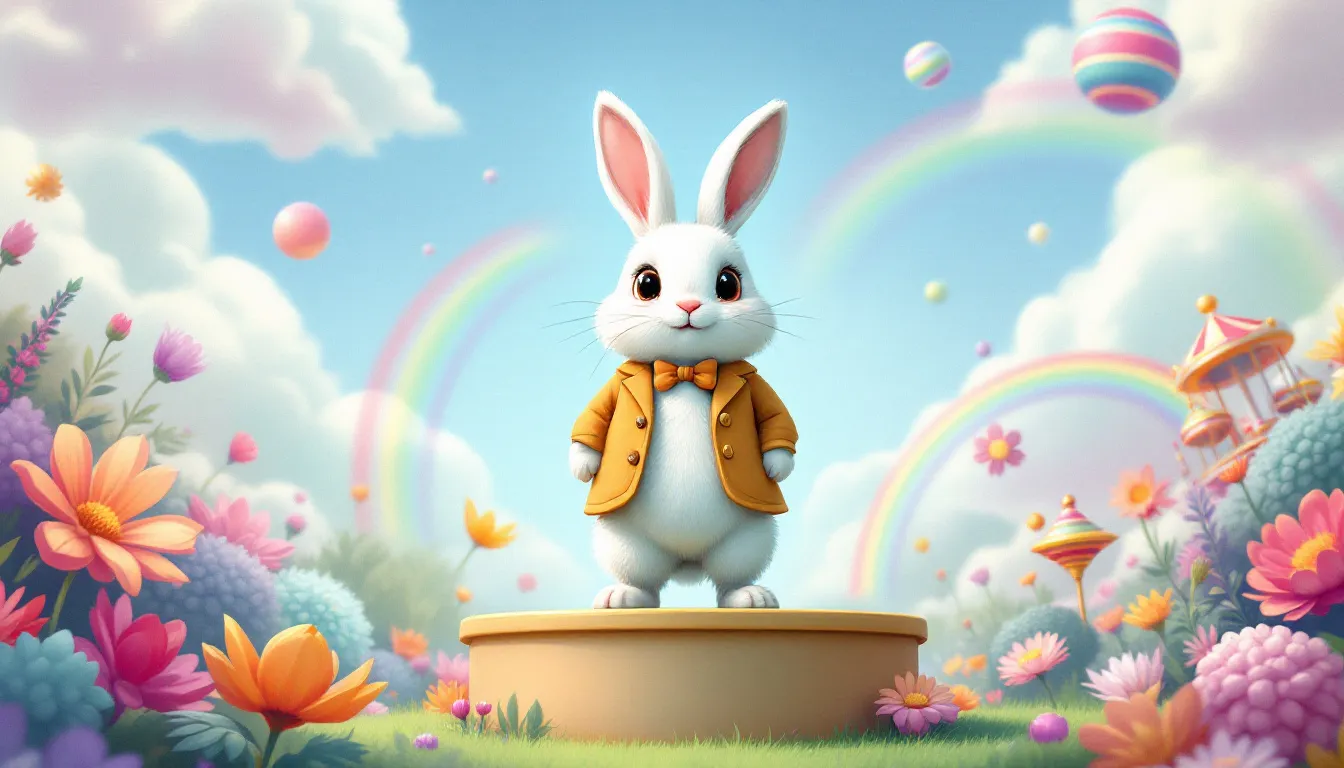
When it comes to showing Charlie rabbits, judges consider various factors, including conformation, coat, and overall presentation. The cleanliness and condition of the rabbit are crucial elements that judges take into account during competitions. A well-groomed Charlie rabbit with a clean, healthy coat is likely to make a better impression.
While Charlie rabbits may not always meet the color requirements for showing, their unique patterns and charming appearance make them stand out with enough color. Proper care and presentation in top condition can make a significant difference in the showable ring.
Common Misconceptions
There are several common misconceptions about Charlie rabbits that can lead to misunderstandings about their care and characteristics. One frequent myth is that Charlie rabbits always display bright coloration, but due to genetic factors, many have very little coloration, often below the minimum threshold required for showing. Understanding these genetic nuances allows potential owners to appreciate the unique qualities of Charlie rabbits.
Another misconception is that Charlies are just another type of broken rabbit, but it explains a distinct pattern with subtle color distribution. By clarifying these myths, we can better understand what is wrong and care for these special rabbits.
Adopting a Charlie Rabbit
Adopting a Charlie rabbit can be a rewarding experience. Rescue organizations often have Charlie rabbits available for adoption, helping to find homes for bunnies in need. Potential owners should consider adopting from local shelters, as they frequently have various rabbit breeds, including Charlie rabbits.
Visiting breeders or rescue organizations enables potential owners to interact with the rabbits and assess their temperament before they decide to buy. This ensures that you bring home a rabbit that fits well with your lifestyle and family.
Summary
In summary, Charlie rabbits are unique due to their distinct genetic makeup and minimal coloration. Understanding the genetics, identifying features, and specific care needs of these rabbits is crucial for their well-being. Proper diet, housing, and health monitoring are essential aspects of their care, while ethical breeding practices ensure the health of future generations. Additionally, it is important to note that Megacolon, a genetic digestive disorder, cannot be cured and requires careful management in affected rabbits.
By considering these factors and dispelling common misconceptions, you can provide the best care for your Charlie rabbit. Whether you’re a current owner or considering adoption, these insights will help you appreciate and care for these charming bunnies.
Frequently Asked Questions
What defines a Charlie rabbit?
A Charlie rabbit stands out with a mostly white coat and only a splash of color—less than 10%—often featuring cute little spots on its nose. They’re pretty rare and definitely eye-catching!
How does the genetics of Charlie rabbits differ from other rabbits?
Charlie rabbits stand out because they carry two copies of the broken gene (EnEn), giving them their unique, minimal coloration, unlike other rabbits with just one broken gene (Enen). This genetic twist really makes them one-of-a-kind!
What should I feed my Charlie rabbit?
To keep your Charlie rabbit happy and healthy, feed them a balanced diet of fresh hay, leafy greens, and just a small amount of pellets. This mix ensures they get all the nutrients they need!
What are some common breeds that exhibit the Charlie pattern?
Holland Lops and Dwarf Hotots are the main breeds you’ll spot with the Charlie pattern. They definitely bring some unique charm!
What should I consider when adopting a Charlie rabbit?
Definitely think about adopting from a rescue or local shelter, and take some time to interact with the rabbits to see which one clicks with you before making a decision. It’s all about finding the right fit for both you and the bunny!

